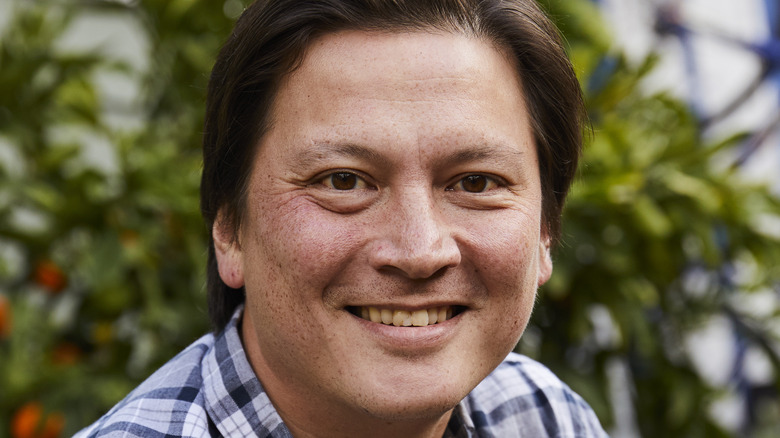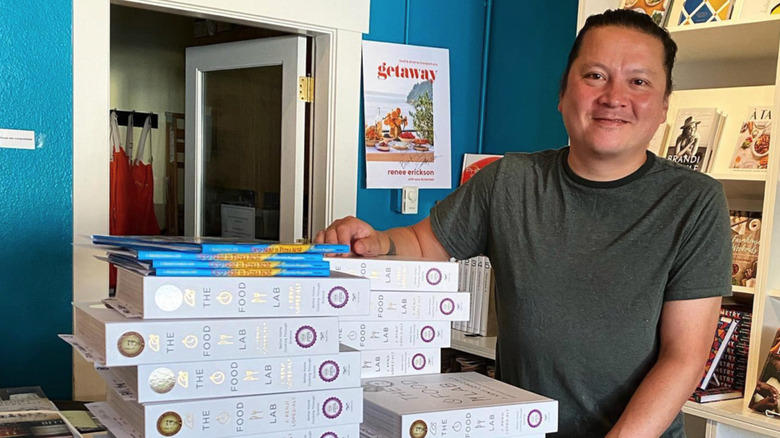How Kenji Lopez-Alt's Degree In Architecture Informs His Cookbook Writing - Exclusive
Given that he's a celebrated chef and food writer who pens pieces for the New York Times, has a new book out this year ("The Wok: Recipes and Techniques"), has a YouTube channel with, as he jokingly describes it, "more subscribers than is reasonable," and with experience cooking professionally in multiple celebrated restaurant kitchens, you might think James Kenji López Alt (who goes by Kenji) was always interested in the culinary world.
He wasn't. In fact, cooking or writing about food or having any serious involvement with the food world in any way had never really occurred to Kenji until he was already in college — and no, it wasn't culinary school, it was the Massachusetts Institute of Technology. Kenji grew up, as he described it during a recent exclusive Mashed interview, with "a lot of scientists in my family," so it's not much of a surprise he ended up a MIT. He wasn't studying science, though — he would earn a degree in architecture.
While Kenji's studies would end up informing his career in multiple notable and unique ways, it was what happened during the summer between his freshman and sophomore years of school that would guide his professional path. "I accidentally got my first cooking job when I was looking for summer work," Kenji said, adding: "I was looking for a job as a server to make some money. One of the restaurants I went to said they had a cook that didn't show up that morning and I could start working as a cook that day for the summer if I wanted to try it. I said 'OK,' and I ended up loving cooking. I started getting my interest in cooking after I got my first job as a cook."
The architecture of a recipe, according to Kenji
At first thought, designing buildings and writing recipes might not seem to have much in common. But Kenji sees crossover. "A lot of architecture is thinking about the role of the functionality versus the form of things ... it's less about, 'How do I make this building stand,' or 'How do I make this building look cool?' It's about the intentionality of purpose. If I know that this space is going to be used in a specific way, I need to design it to work in that space, and a building that works for one client isn't going to work for another, a building that works in one city won't work in another city. A lot of it is about contextualization and understanding that there isn't one 'better form' than another, it's really just all about text and the parameters within which you're working."
By thinking more about the end user (the home cook, e.g.) than worrying only about this or that specific tool or ingredient, Kenji has managed to craft recipes with broad appeal thanks to a flexibility that still yields a delicious dish. "When you think about recipes in that way, it really makes you understand that you have to be open to other people's needs. It's also why I focus more on technique as opposed to strict recipes, because a very strict recipe only works if you have this exact ingredient list, you follow these exact set of instructions, and you have this exact equipment. If you understand techniques and you understand why things work together, you become much more adaptable and you understand, 'OK, these are the parts of the recipe that are essential, these are the things that I can play around with.'"
Kenji's newest book, "The Wok," is now available on Amazon.

